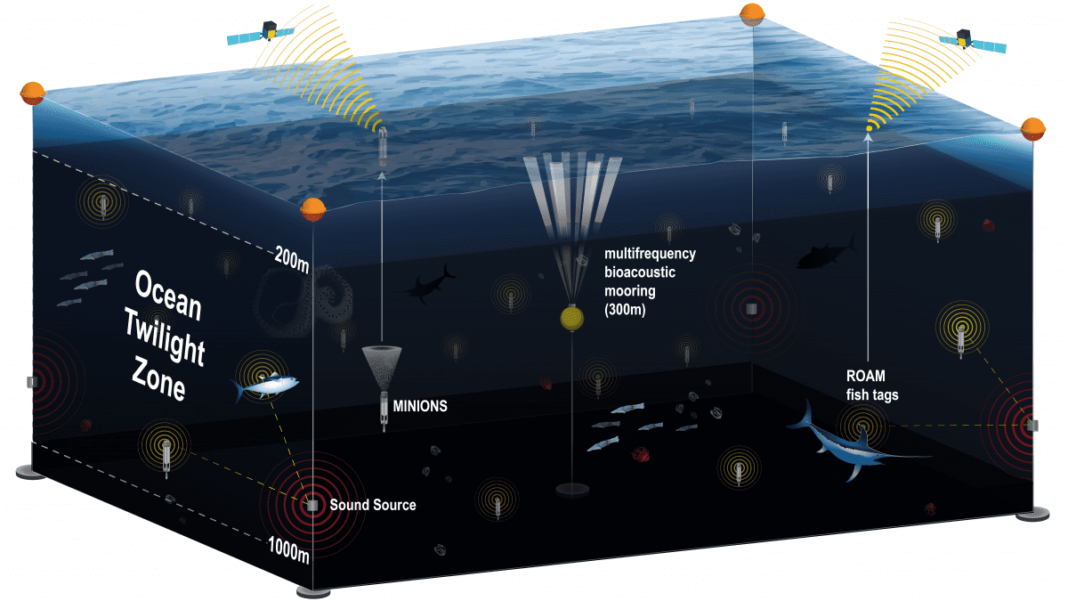A new observation network under development by the Woods Hole Oceanographic Institution is looking to gather data about the ocean twilight zone, a dimly lit region roughly 200–1000 meters (650–3200 feet) below the surface.
Containing the largest amount of fish biomass on Earth, it’s still largely unexplored by scientists.
Encompassing 250,000 square kilometers (roughly 155,300 square miles) of the northwest Atlantic Ocean, the network will collect around-the-clock data about the twilight zone over months or even years, offering unprecedented insight into this little-known, yet vitally important region of the sea.
According to WHOI ocean ecologist Simon Thorrold, a principal investigator for the network:
“It will cover a really huge piece of the ocean. We’re used to going out for several weeks on a research vessel to study just a small area, and returning there maybe once or twice a year if we’re lucky. Now, we’ll be able to get continuous measurements from a large chunk of the ocean twilight zone over significant periods of time. It’s very exciting.”
The network will give scientists a comprehensive view of the twilight zone, or mesopelagic, using several different technologies including moored buoys equipped with acoustic survey systems; a swarm of optical and geochemical sensors; and new fish-tracking tags that will continuously record the position of major predators such as sharks and tuna. All of these components will connect to the network’s buoys using acoustic signals underwater and an Iridium satellite link at the surface.
The information provided by the network will improve estimates of the density and distribution of fish and invertebrates in the twilight zone, reveal new insights about their interactions and daily migrations to and from the surface and help fuel new strategies for conservation and policy making. The network will also help researchers better understand how the twilight zone affects carbon cycling and global climate, according to WHOI marine radiochemist Ken Buesseler:
“Plankton — tiny plant-like organisms — at the surface remove carbon dioxide from the atmosphere as they grow. When animals from the twilight zone migrate up to feed on those plankton and then return back to deeper waters, they take that carbon with them. The question is, how much does that natural cycle of life and death affect the amount of carbon that is sequestered in the deep ocean? And if humans start removing large numbers of fish from the twilight zone, how could that change?”
Buesseler compares the new observation network to a “field of dreams.”
“You build something like it, and all kinds of researchers will come and use it, because they’ve just never had the opportunity or infrastructure in place for them to be able to do these sorts of observations.”
(Image credit: WHOI)

